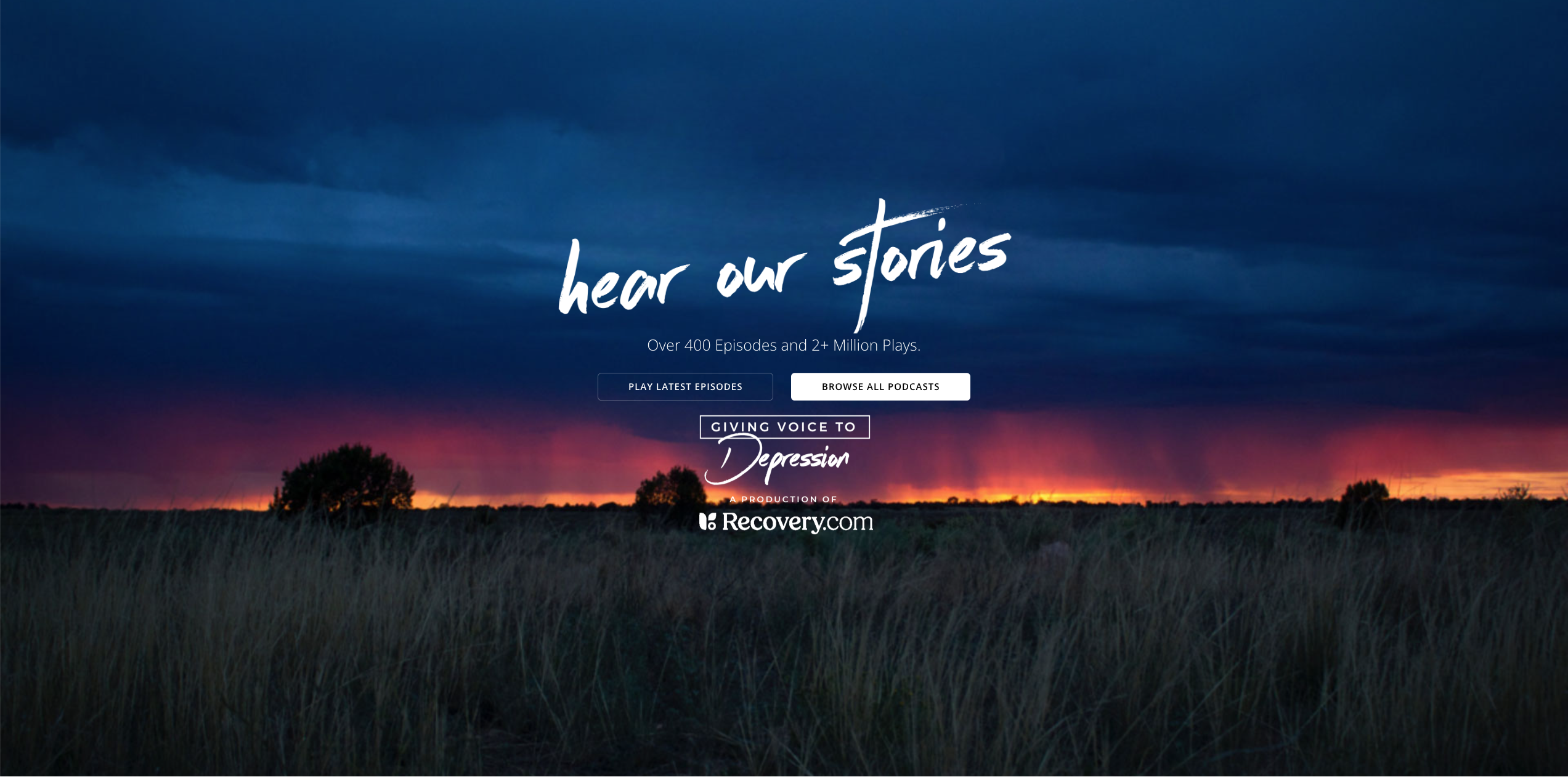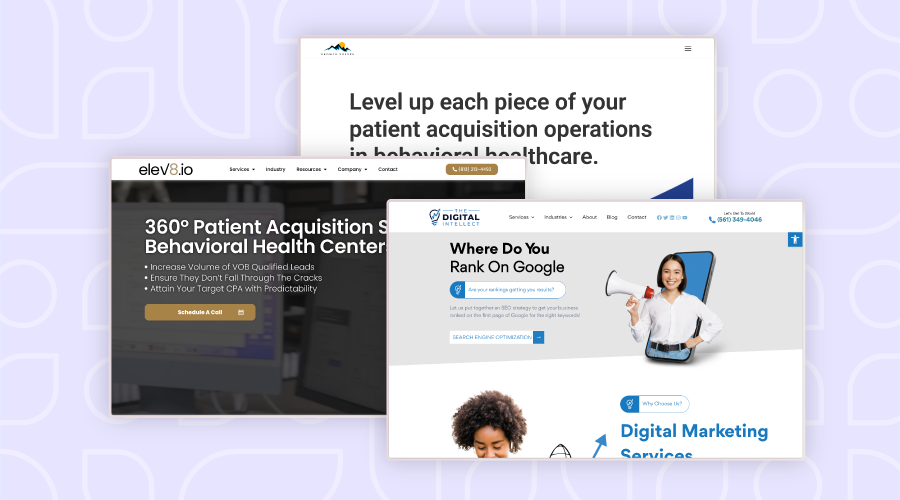Photography Guide for Treatment Centers
How Great Photography Improves Your Admissions

Compelling photos of your center unlock opportunities for connection, trust, and profile clicks. Centers that follow these guidelines typically see significant improvements in the number of people that click on their profile and connect with admissions. These principles can help your own website and your Google My Business profile just as much.
Show. Don’t Tell.
“A picture is worth a thousand words.”
Why? Because pictures immediately affect emotions. They garner trust, emotional connection, and slice through the fear of the unknown. And they do that all in seconds.
Pictures turn a building with beds and rooms into a place people can recover. They can help the 90% of people who don’t get treatment cross that bridge.
Good photos can potentially do more for your center profile than your accreditations, location, and staff. People on the internet don’t read, either. They scan—usually, looking for pictures or something else that jumps out. That’s how photos show.
So think about every aspect of your program that matters and how you can visually show it to someone who likely knows nothing about treatment.
Why Do Photos Matter?
Seeing the experience you offer gives potential patients confidence in their decision—which can be invaluable to someone making a life-changing, life-saving choice. Honestly representing the experience at your center instills trust, which can encourage someone to reach out for treatment.
Photos show the reality of addiction and mental health rehab. They ease fears of the unknown and squash stereotypes about rehab.
Why Pictures Sell (And Ones That Don’t)
Authentic pictures attract and build trust. Stock pictures don’t.
Stock Photos—Boo!
One clear way to attract? Use authentic photos and avoid stock photos. People can spot staged photos from a mile away, and no one (or very few) can emotionally connect to stiff poses, unrealistic settings, despondent grimaces, and artificial smiles.
Recovery.com values transparency, so stock photos go against our guidelines for provider profiles.

Professional Photography—Yay!
Hire a professional photographer. Consider their work a true investment: you pay for their talent and the connections your photos will make with prospective patients.
P.S. If professional photography isn’t an option for you, that’s okay. It’s much better to have non-professional photos than none at all. Use your phone or a camera to snap pictures of your clean and styled facility. Our next tips still apply, too!

Variety is the Spice of Photography
Include various settings, angles, seasons, and models in your photo shoot. This keeps the eye and mind engaged, and creates a chance for connection with each new shot. More photos also open a larger window into your treatment experience, which can make an unknown situation less daunting.
A note on ethics: The National Association of Addiction Treatment Providers (NAATP) says “Patients’ identities must not be revealed by a treatment provider, either in the form of photographic images, video images, media coverage, or in marketing testimonials, at any time during the client’s engagement.” Doing so, NAATP says, is only okay if the patient gives informed, written consent and has finished treatment. For more advice, see Jaywalker’s code of ethics. You can also hire models to pose as patients. They’ll portray the exact day-to-day life at your center while keeping your patients’ privacy intact.

Highlight the Genuine Experience
Genuine photos attract by appealing to desires and emotions, which can “stop the thumb” mid-scroll. A professional photographer can keep your models and scenes looking natural, compelling, and trustworthy—which reflect back on your center as a whole and make the experience look familiar.
This is called lifestyle photography.





The Value of Lifestyle Photography
Lifestyle photography captures genuine moments and everyday situations—like candid photos, but better. Using lifestyle photography, you can represent the unique experience of your treatment center.
We’ve found lifestyle photography can produce a 166% better click-through-rate than a profile without.
Capturing the real-life experiences of your center also helps potential patients imagine themselves at your center. When they can easily see themselves recovering with you, their confidence builds, their trust grows, and your center becomes familiar. Knowing what to expect soothes the fears of an unknown, highly stereotyped experience.
Photos of your center’s true experience provide the information, trust, and familiarity people need to make a decision in a tumultuous time. That’s priceless.
Ideal Photos for Your Profile
You can enhance your Recovery.com profile with lifestyle photography and other small improvements.
The More, The Merrier
Include every room, angle, and activity you reasonably can. You never know who may appreciate seeing your walking paths, or who will want to know what equine therapy looks like. Include as much as you can to familiarize the experience and show what you offer. We recommend a minimum of 8 pictures for each profile.

Showcase Your Uniqueness
Do you have a unique treatment track? A professionals or veterans program? An outdoor activity you only do in the winter? Then make sure your photos show it off.

Clear Photos for Header Images
Make sure you have high-resolution images, too. A professional photographer, using a high megapixel camera, provides the high-quality photos you’ll need. If that’s not an option, you can use your phone.
We use large photos for header images, so be sure to send one our way. All images should be at least 2000 pixels.

A good picture will look mostly clear, bright enough to see everything in the picture, and centered. A great picture will account for angles, lighting, and have a staged scene without any obstructions. The best picture will include great lighting, clean and level interior shots, a staged scene with models, and high-resolution clarity.


Spotlight Your Staff
Place your smiling staff in front of a plain, nondescript background. Avoid brick backdrops, textured walls, direct sunlight, and unnatural poses. Friendly, approachable-looking staff can set someone at ease.


Knowing who’s involved in treatment can enhance the relatability of your center and improve someone’s trust.
Life-Changing Photography: It’s Real.
Photos can prompt a life-changing decision by creating trust, confidence, emotional connection, and intrinsic appeal. Those qualities help connect the right people with your care. That means more qualified leads—and more opportunities to help people recover.
To add pictures or make any edits to your profile, contact us at edits@recovery.com.

 By
By
.jpg?width=800&height=524&name=Frame%202578POG%20(1).jpg)
.jpg?width=800&height=731&name=Frame%202566POG%20(1).jpg)


